Giorgio Locatelli's simple spaghetti recipes: cacio e pepe, carbonara and more
Updated , first published
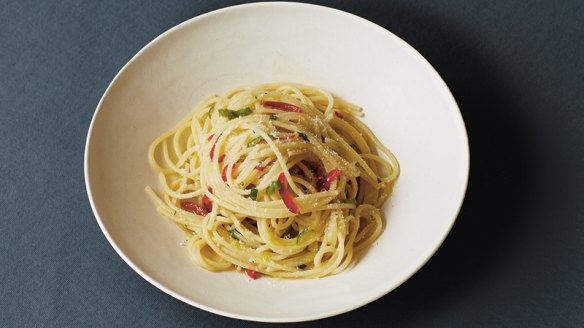
In an extract from his new cookbook, Made at Home, UK-based Italian celebrity chef Giorgio Locatelli provides the recipes for his favourite late-night spaghettis.
These spaghettis are not just convenient, quick and easy dishes; they can also be seductively brilliant, a perfect example of how a dish can be so much more than a sum of its parts.
Each recipe makes enough for six. With the exception of the cacio e pepe, allow one litre of water to every 100g of pasta, and add a teaspoon of salt per litre of water. The quantity of pasta we seem to have settled on these days is around 70g per person, but anywhere between 70g and 100g is about right for these recipes, depending on how hungry you are and if you are eating anything else to follow.
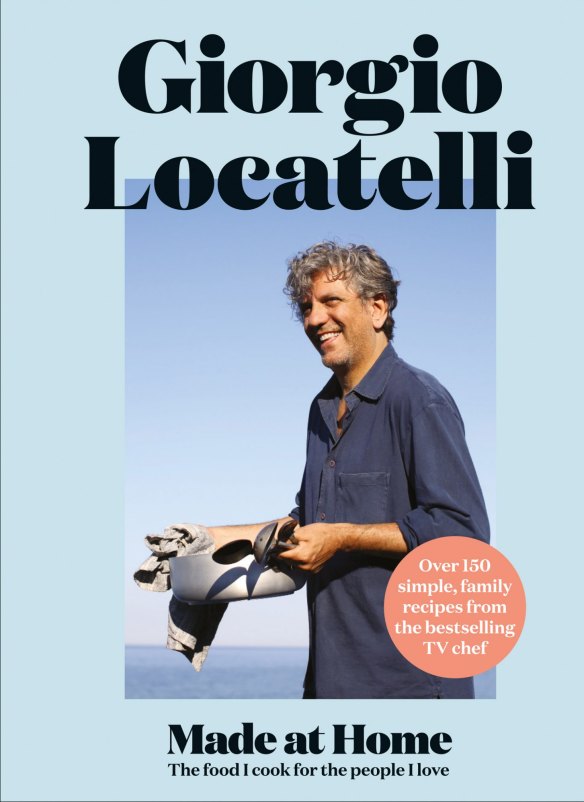
Aglio, olio e peperoncino (garlic, oil and chilli)
Don't be scared to add three, four or five sliced cloves of garlic per person, and don't be shy with the chilli either; I would use a scotch bonnet, seeds and all, but how hot you make it is up to you. Chillies in red and green are nice, too.
The real trick to this is to start with just a little extra virgin olive oil in a saute pan and put in your sliced garlic while the oil is still cold. Raise the temperature slowly and just before the garlic starts to fry, pull the pan off the heat, add a little more cold oil, then put it back on the heat. Keep doing this several times, adding a little more of the cold oil each time, so that you keep the temperature down and the garlic is not frying, but just infusing the maximum amount of its flavour into the oil before you put in the chilli.
1. Start cooking 500g of spaghetti in plenty of boiling salted water, and slice your chilli (around a tablespoonful, or more if you prefer) and around 4 cloves of garlic about a millimetre thick.
2. You need around 200ml of good extra virgin olive oil, but start with a little of it, cold, in the pan. Put in your garlic, then keep taking the pan off the heat and adding a little more cold oil, then returning it to the heat so that you don't burn the garlic.
3. Once all the oil is in, you can let the garlic begin to take on a little bit of colour and put in your chopped chilli. Let it cook very briefly, stirring it into the garlic, then pull the pan from the heat and stir in a couple of spoonfuls of the cooking water from the pasta – take care, as it may spit.
4. When the pasta is cooked but still al dente, lift it out and drain it, but keep back the cooking water.
5. Toss the pasta really well through the oil, garlic and chilli, adding a little more cooking water from the pasta if it is too dry, as you want the garlicky hot oil to really cling to the spaghetti, and serve straight away. If you like, you can toss through a tablespoon of chopped fresh parsley and finish with some grated parmesan or pecorino.
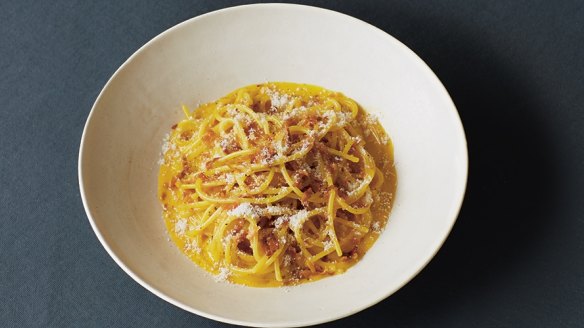
Carbonara
The true cured pork to use for carbonara is guanciale, which comes from the cheek, and has less fat than pancetta. Don't cut it too finely or regularly, as you want a nice chunk to bite into every now and then amid the silkiness of the egg.
Some people add the eggs and cheese to the pan, but it is easy to underestimate the heat of the pan, and the danger is always that the eggs will scramble. So I prefer to mix the eggs and cheese in a warm bowl and then tip in the hot spaghetti, which will cook the eggs but keep their silkiness.
1. Chop about 10 slices of guanciale or pancetta.
2. Begin to cook 500g of spaghetti in plenty of boiling salted water.
3. In a frying pan, heat a knob of butter, then put in the guanciale or pancetta and fry until golden and crispy. Take off the heat, and lift out to a warm plate, so that it stays crunchy.
4. Put about a teaspoonful of black peppercorns into the pan and crush with a meat hammer or the end of a rolling pin, then add a couple of spoonfuls of the cooking water from the pasta and stir it around to take up all the bits of guanciale or pancetta which may have stuck to the bottom of the pan.
5. Beat 5 egg yolks and a whole egg in a warm bowl with 3 tablespoons of grated young pecorino romano.
6. One minute before the spaghetti is ready, start to mix in a ladleful of the cooking water at a time until the eggs and cheese become creamy.
7. Drain the pasta (but reserve the cooking water) and toss it in the pan of pepper, together with the reserved guanciale or pancetta.
8. Add a little more cooking water if the pasta seems too dry, then transfer it to the bowl of eggs and cheese and toss well, until coated in the silky mixture. The heat of the spaghetti will cook the eggs without scrambling them. Add more black pepper, if you like.
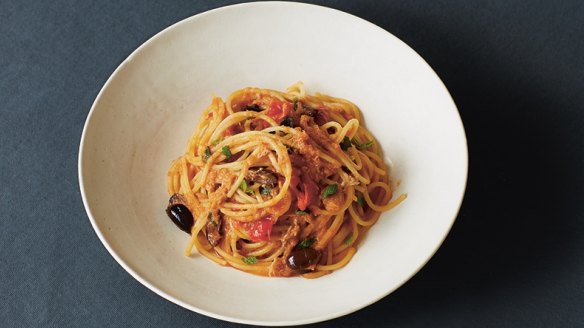
Tuna, tomato and olives
Buy olives with the stone in and crush them, so that the bitterness from the stone is released into the flesh, before pitting them. I suggest finishing the pasta with some chopped fresh mint leaves, but you could use parsley, oregano or marjoram, whichever you have, but no cheese with fish, please.
Directions
1. Heat 4 tablespoons of extra virgin olive oil in a saute pan, add 2 finely chopped cloves of garlic, a teaspoon of chopped chilli and a tin of chopped tomatoes, bring to the boil, then turn down to a simmer for 10 minutes.
2. Cook 500g of spaghetti in plenty of boiling salted water.
3. Just before it is ready, add 2 x 200g tins of drained tuna and a small handful of good black olives to the tomato sauce, then taste and season with sea salt and freshly ground black pepper.
4. Drain the pasta, reserving the cooking water, and toss with the sauce and a spoonful of the cooking water. Scatter some chopped fresh mint leaves over the top, and serve.
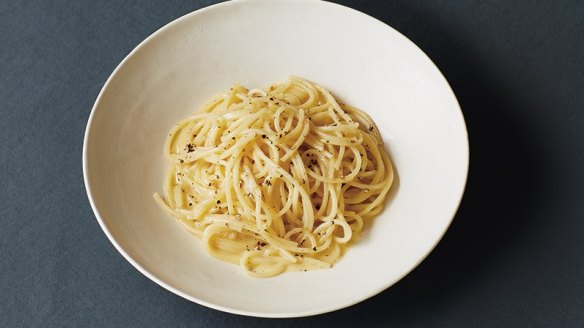
Cacio e pepe (cheese and pepper)
Don't push the pecorino, just caress it against the microplane or grater so that it falls like snow: if you press and condense it, it will become grainy.
1. Grate around 5 tablespoons of young pecorino romano, or more to taste.
2. Start boiling your water for the pasta. For this recipe, the water becomes an important ingredient that binds the cheese and pepper to the pasta, therefore you want as much starch as possible. So only use 3 litres of water for 500g of pasta. This also means using less salt (a teaspoon) and stirring the pasta around in the water becomes pivotal, so that it doesn't stick to itself. So give it your full attention: cook only for 5-6 minutes, until al dente.
3. Once the spaghetti is in, crush around 2 teaspoons of black peppercorns in a sauté pan using a steak hammer or the end of a rolling pin – it is easier to do this in the pan than on your work surface – add a little olive oil, stir in a ladleful of the cooking water from the pasta and bubble up.
4. Now drain your spaghetti (reserving the cooking water), add it to the pan along with the grated cheese and toss everything together really well – the spaghetti will carry on cooking, and so will release more starch into the pan.
5. Add a little more of the cooking water from the pasta as necessary so that it combines with the melting cheese to give a creamy consistency.
This is an edited extract from Made at Home by Giorgio Locatelli, published by 4th Estate, RRP $49.99.
Appears in these collections
The best recipes from Australia's leading chefs straight to your inbox.
Sign upFrom our partners
Original URL: https://www.theage.com.au/goodfood/recipes/simple-spaghetti-recipes-cacio-e-pepe-carbonara-and-more-20171003-gyt54s.html